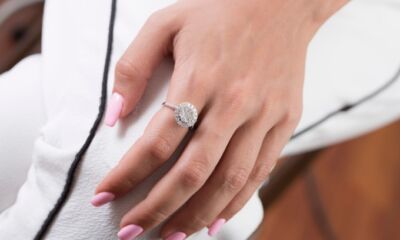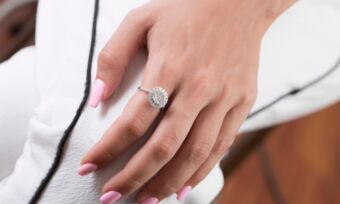Jewellery insurance
Jewellery often holds both financial and sentimental value, and insurance can help cover the cost of repair or replacement if it is stolen, lost or damaged.

Jewellery often holds both financial and sentimental value, and insurance can help cover the cost of repair or replacement if it is stolen, lost or damaged.
How do I insure my jewellery?
You can insure jewellery in two ways:
- As part of, or an added-extra to, a home and contents or contents-only insurance policy. Some insurers also let you add portable contents insurance to protect your jewellery outside your home.
- From specialist jewellery insurance providers as a standalone policy.
Can your home and contents insurance cover your jewellery?
Yes, home and contents insurance can cover your jewellery. The extent of the coverage depends on the type of policy and add-on extras you choose. Always read the Product Disclosure Statement (PDS) to understand what’s covered under your policy.
Standard home and contents insurance cover
Most home and contents insurance policies will cover your jewellery up to a certain limit if it is lost, damaged, or stolen at home. If your claim is higher than this limit, you might not receive the full amount.
The limit varies from insurer to insurer and generally can be increased as an extra if needed.
Single item insurance
Some insurers let you insure individual pieces of jewellery for an agreed value, usually for a higher premium. This may also cover your items when you take them outside your home.
Insuring jewellery away from home
You can often add “portable cover” insurance to your policy to protect your jewellery when you wear it outside. If you need extra portable cover, check if you can list items for their full value and whether cover applies overseas, too.
Is there stand-alone jewellery insurance?
Yes, you can buy jewellery insurance separately from home and contents cover. Specialist providers generally offer higher levels of cover, though premiums can cost you more. Many specialist insurers offer agreed value policies, which pay the insured amount instead of the market value. It means that they will pay the actual amount shown on your policy minus the excess if your jewellery is lost or stolen.
Depending on your policy, you might also get repairs or replacements at your original jeweller, and optional cover for items you wear outside your home. In some cases, providers offer worldwide cover for a limited period.
What do I need to know when looking for a jewellery insurance policy?
Before looking for a policy, it’s a good idea to know:
- Exactly what jewellery you’d like to cover.
- Where you’d like it covered (only at home, away from home or while travelling overseas).
- How much it would cost to replace.
- If there are any pieces you’d like to insure as an individual item (such as a sentimental or high dollar-value item).
- What is covered already in your home and contents, or contents-only, policy (if you have one).
- How much of an excess you’d be prepared to pay if you had to make a claim.
- How much you can afford to pay for insurance premiums.
What to consider when insuring your jewellery
When researching options to insure your jewellery, consider the following:
Limits on maximum benefits
Check insurance policies for any limits that may affect your payout. Some policies cap payouts per item (for example, a $7,000 ring covered for only $1,000) or set combined limits for multiple items (for example, $5,000 total for multiple jewellery items).
You may be able to list high-value items individually for higher cover, but usually at an extra cost.
Replacement procedures
Check with your insurer how they replace jewellery after a total loss. Some have agreements with jewellers that allow them to provide discounted replacements for your items. You may then have the option to accept the lower-cost replacement or take a cash settlement.
Having evidence for your claim
Ask your insurer what proof you may need for making a claim, such as receipts, valuations or photographs of your jewellery at home.
Jewellery valuation
You can consider jewellery valuation to get an official certificate describing your jewellery and its value. This can help you avoid underinsurance, and may also come in handy during claim time.
Read the fine print and compare options
Compare various options to find suitable coverage. Always read the PDS carefully. Pay close attention to exclusions, excesses, and other conditions that may affect your cover.
What’s not covered by jewellery insurance?
Exclusions for your jewellery insurance depend on the type and level of cover you choose, and whether you take out cover with a specialist insurer or through your home and contents policy.
Some common exclusions that may apply across policies include:
- Any loss due to general wear and tear.
- Losses arising out of structural defects, faulty design or poor workmanship.
- Lawful confiscation of jewellery.
- Jewellery that has been illegally acquired or held.
- Intentional loss by policyholder, their spouse or partner, family member or a person they live with.
- Misplaced jewellery with no identifiable event to account for the disappearance. This exclusion may not apply to portable contents or specialist jewellery insurance.
- Items not defined as jewellery, such as unset gemstones.
- Loss due to theft if your home wasn’t properly secured or you fail to report the theft to the police.
What to do when making a claim?
If you suspect your jewellery has been stolen, immediately notify the police and obtain a police report.
Contact your insurer as soon as you become aware of any loss or damage to your jewellery. They should then let you know what they might need to assess your claim, including detailed information about the incident.
What evidence do you need when making a jewellery insurance claim?
Insurers may request a range of information or documents when you make a jewellery insurance claim, including:
- Proof of ownership in the form of purchase receipts and photographic evidence of your jewellery in your home.
- A jewellery valuation certificate describing each item and its value.
- A copy of your police report for loss caused by theft.
This article was reviewed by our Content Editor Alasdair Duncan before it was updated, as part of our fact-checking process.

Before moving into finance, Vidhu went to law school where she studied human rights law. She has a Bachelor of Law degree and has previously worked in asset finance for Clifford Chance for more than four years. During her time at Clifford Chance, she worked in the India, London and Hong Kong offices on everything from aviation to vessel finance. In her spare time, Vidhu enjoys keeping up with the latest financial trends and spending time with her dog, Coco. You can connect with Vidhu on LinkedIn.
- How do I insure my jewellery?
- Can your home and contents insurance cover your jewellery?
- Is there stand-alone jewellery insurance?
- What do I need to know when looking for a jewellery insurance policy?
- What to consider when insuring your jewellery
- What’s not covered by jewellery insurance?
- What to do when making a claim?
- What evidence do you need when making a jewellery insurance claim?
 24/7 claims
24/7 claims
 Online discount
Online discount
 New for old
New for old
Try our Home Insurance comparison tool to instantly compare Canstar expert rated options.





